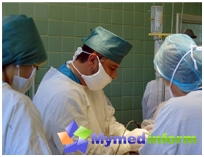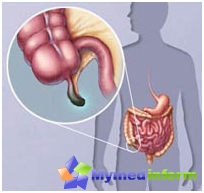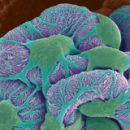Patients suffering from intestinal obstruction should be immediately hospitalized to the hospital for the choice of the treatment method. Treatment of intestinal obstruction largely depends on the time of receipt of the hospital, the forms of the disease and the overall state of the patient.
Content
Interestable obstruction is a state characterized by a partial or complete impairment of the content of the contents of the digestive tract, resulting from a mechanical obstacle or disruption of the intestinal motor function.
Intestinal obstruction on the mechanism of development can be dynamic, mechanical and mixed. By flow, the disease can be acute or chronic.
Conservative Treatment of intestinal obstruction
 Treatment of intestinal obstruction largely depends on the form of the disease, the period of hospitalization and the state of the patient plays a latter role in the choice of therapeutic tactics.
Treatment of intestinal obstruction largely depends on the form of the disease, the period of hospitalization and the state of the patient plays a latter role in the choice of therapeutic tactics.
When identifying signs of intestinal obstruction of the patient, it is urgent to deliver to surgical hospital.
Emergency surgery after short-term preoperative preparation (2-4 hours) is shown only in the presence of peritonitis, in other cases the treatment starts with conservative and diagnostic (if the diagnosis is finally not confirmed) of events. Events are aimed at combating pain, reinforced by peristaltic, intoxication, release of the upper digestive tract from congestive content.
In the early hospitalization and the absence of explicit signs of mechanical obstruction, siphon units are made, they are decompressed by the upper departments of the gastrointestinal tract with the help of probes on which the accumulated gases depart and is removed from the bowel cavity congestion content. To replenish losses of fluid, electrolytes, proteins, 1.5-2 liters of salt solutions are introduced, 200-500 ml of plasma.
Operational treatment
In the absence of effect from conservative treatment, surgical treatment is shown. Conservative treatment is effective only in cases of disappearance of abdominal pain, abdominal bloating, stopping vomiting, nausea, adequate gases and feces. No effect for 3-4 hours testify in favor of mechanical obstruction and the need for operational intervention.
In patients delivered in serious condition, with obvious signs of strange obstruction, tactics should be different. Patients showing urgent surgery. Preparation for the operation begins with the introduction of colloidal solutions (polyglunin), according to the testimony of preliminary, cardiac glycosides, crystalloids, protein preparations. The necessary fluids are administered under the control of central venous pressure and data for hourly diuresis. According to the testimony, hemotransphus is carried out (blood transfusion).
Operational access - Wide median laparotomy (i.e., the vertical incision passes along the middle line of the abdomen). With the audit of the abdominal cavity, the doctors determine the place of obstacles and the state of the disadvantaged intestinal loops. If the intestine is clearly notiable, then it must be ledging (delete) until the obstacle.
When obstructing the intestines with various foreign bodies, enterotomy (incision) and extraction of foreign bodies. In cases of early invagination (penetration of one loop of the intestine to another), disinvagination is shown, after which the viability of the intestine is determined and the issue of expanding the operation is solved. In the late cases, invagination in the presence of a non-visual intestine shows resection (removal) of the entire affected area (invaginate).
Decompression of the intestine not only during, but also in the postoperative period, with the aim of preventing and treating parares, it is most commonly closed in ways - the probes are used, which are introduced transnasal (through the nose), transanal (through the rectum). The operation is completed with a thorough sanitation (treatment) of the abdominal cavity, if peritonitis occurs, the drainage of the abdominal cavity of silicone tubes is shown.
In the postoperative period, measures continue to normalize the intestinal work, the struggle against infection, the restoration of the intestinal motor function, the prevention of complications from the cardiovascular system and respiratory system.









